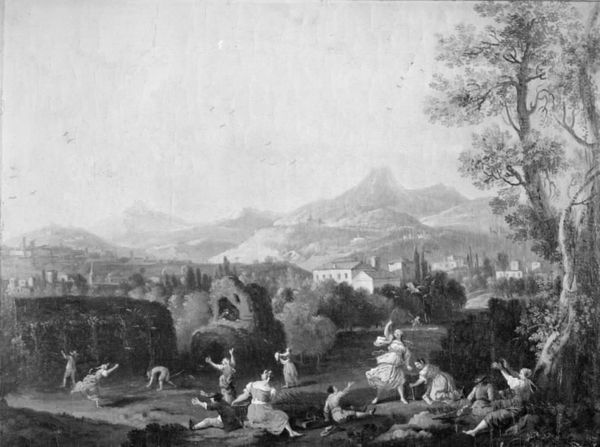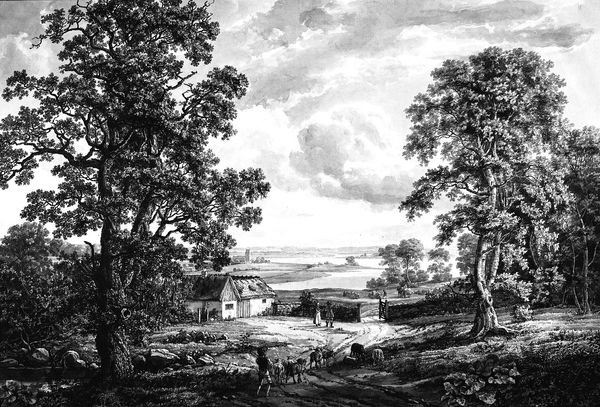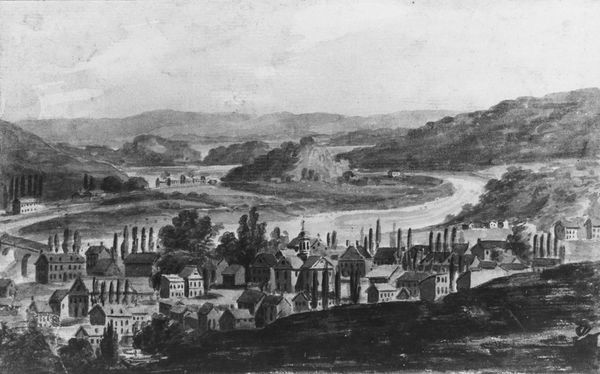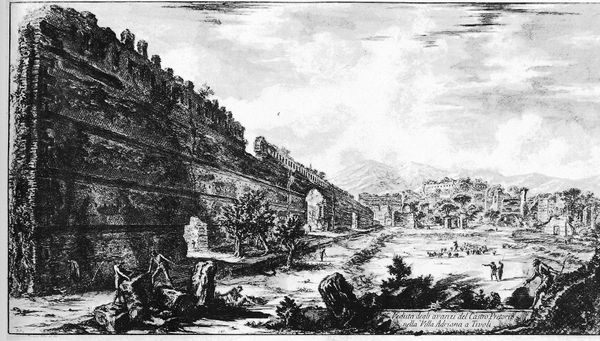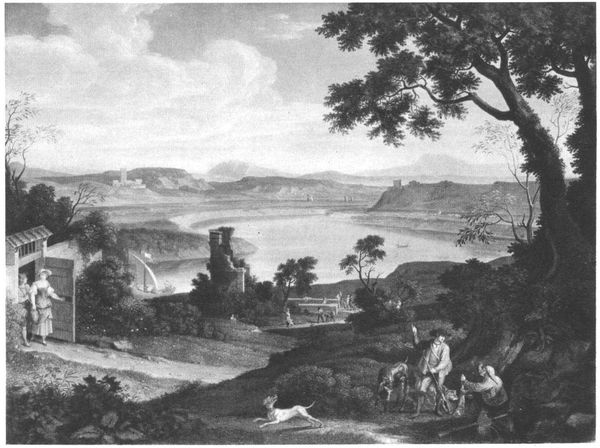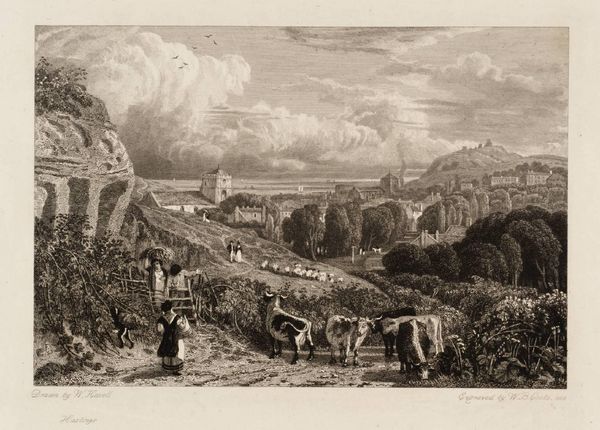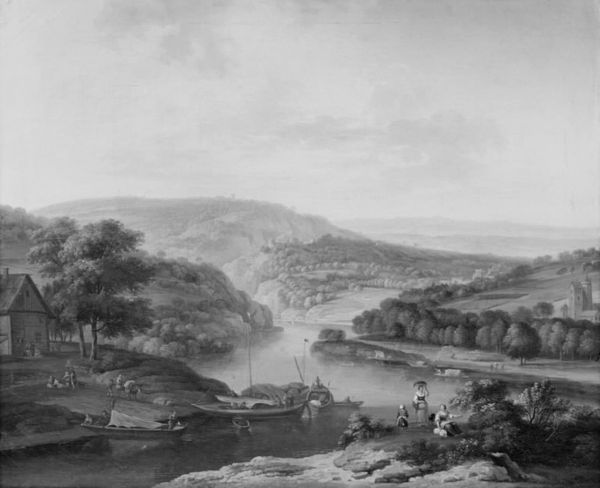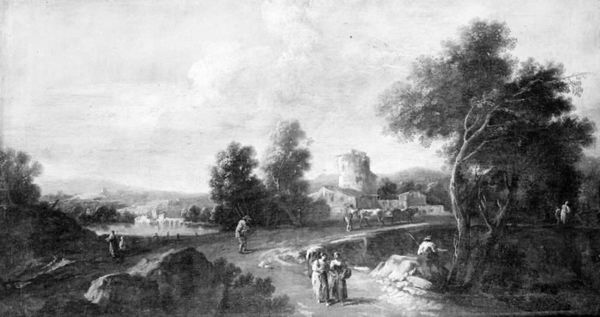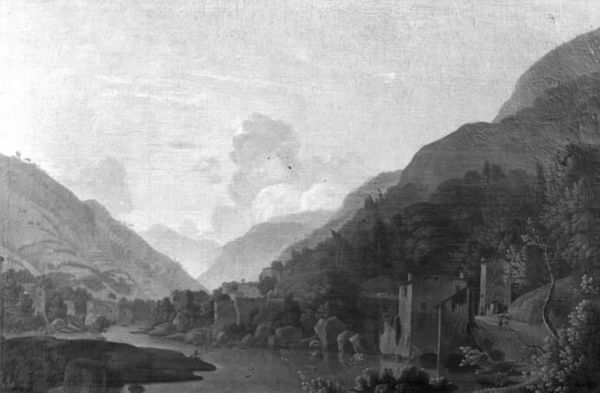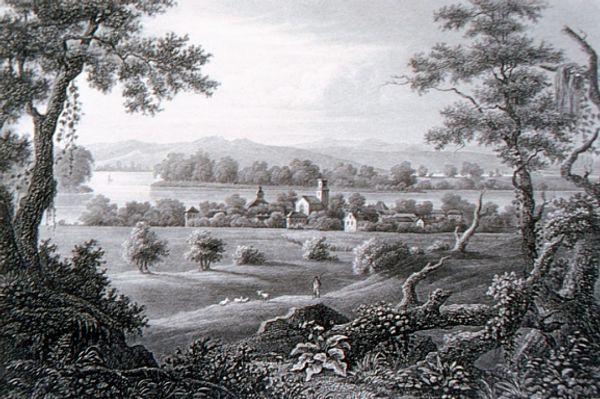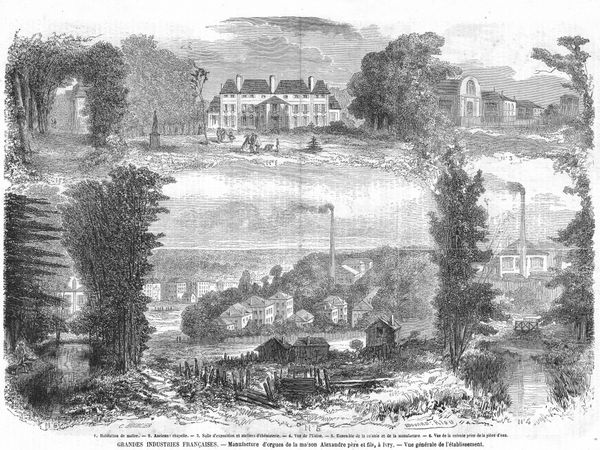
drawing, pencil
#
drawing
#
landscape
#
landscape
#
romanticism
#
black and white
#
pencil
#
cityscape
Copyright: Public domain
Karl Bodmer's rendering of Traben Trarbach and the Grevenburg presents us with a landscape steeped in symbols of faith and power. Dominating the skyline are the church spires and the ruined Grevenburg castle, emblems of spiritual authority and temporal dominion, respectively. Consider the spires: these are not merely architectural details but upward-pointing fingers, guiding the eye – and perhaps the soul – heavenward. Similar forms can be found across cultures, from ancient obelisks in Egypt, to minarets in Islamic architecture, all embodying a reaching towards the divine. The ruined castle evokes a different sentiment. Once a symbol of strength and control, its decay speaks to the transience of earthly power. This motif—the fallen fortress—reappears throughout art history, often reflecting societal anxieties about change and impermanence. Together, the juxtaposition of the church and castle creates a powerful psychological tension. The longing for permanence is a deep-seated human desire, and images such as this capture our collective contemplation on mortality.
Comments
No comments
Be the first to comment and join the conversation on the ultimate creative platform.

